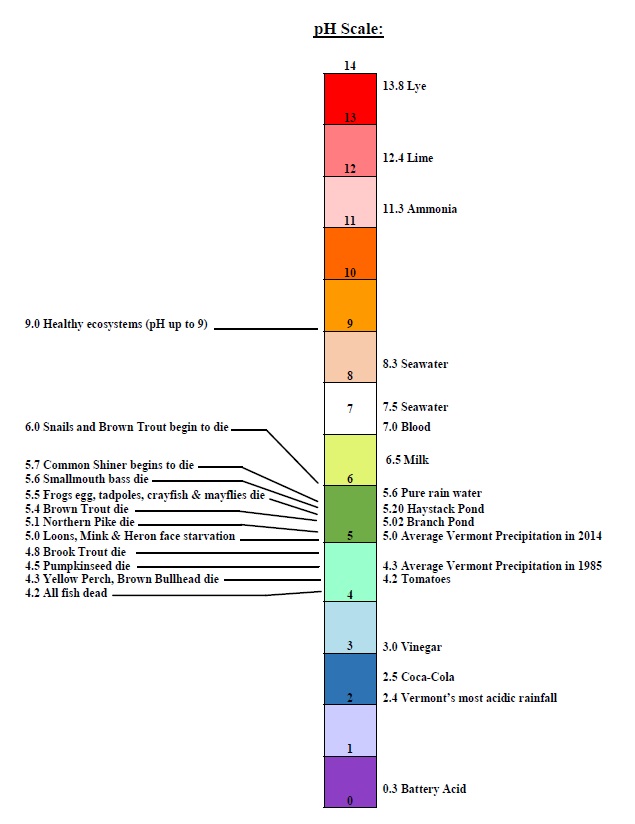Vermont Long-Term Monitoring (VLTM) of Acid Sensitive Lakes
 The VT Department of Environmental Conservation has been monitoring the chemistry of low ionic strength lakes in Vermont since the winter of 1980. In 1983, the US EPA Long-Term Monitoring Project was initiated within the National Acid Precipitation Assessment Program (NAPAP). Since then, the VLTM project has been conducted in cooperation with the US EPA. This cooperative project consists of six federal/state agencies and universities in different regions of the U.S. and is managed by the US EPA's Clean Air Markets Division. Currently, Vermont monitors the chemistry of 12 lakes. Each lake has been monitored under the current VLTM project from 28 to 32 years, making it one of the oldest lake monitoring programs designed specifically to assess acidification.
The VT Department of Environmental Conservation has been monitoring the chemistry of low ionic strength lakes in Vermont since the winter of 1980. In 1983, the US EPA Long-Term Monitoring Project was initiated within the National Acid Precipitation Assessment Program (NAPAP). Since then, the VLTM project has been conducted in cooperation with the US EPA. This cooperative project consists of six federal/state agencies and universities in different regions of the U.S. and is managed by the US EPA's Clean Air Markets Division. Currently, Vermont monitors the chemistry of 12 lakes. Each lake has been monitored under the current VLTM project from 28 to 32 years, making it one of the oldest lake monitoring programs designed specifically to assess acidification.
The objectives of the VLTM Program are to:
- To characterize the acid-base status of 12 acid sensitive lakes in Vermont
- To evaluate long-term chemical trends on 12 acid sensitive lakes in Vermont.
Acid sensitive lakes are monitored intensively at the outlets for five weeks during spring run-off (late March to early May) and near their deepest point during mid-May (spring), July-August (summer) and October (fall). During thermal stratification, the lakes are sampled at both the epilimnion and hypolimnion. Spring run-off sampling provides the "worse case scenario" of acid shock.
See the EPA's site on monitoring surface water chemistry on acid waterbodies for more information.
See the Vermont Integrated Watershed Information System for VLTM acid lake data.
Vermont Acid Precipitation Monitoring Program (VAPMP)
The VAPMP was initiated in 1980 to monitor the pH of bulk precipitation on an event basis through volunteer monitors located throughout Vermont. The goals of this program are:
- To describe the pH range of bulk precipitation in Vermont.
- To evaluate seasonal trends in bulk precipitation pH.
- To evaluate spatial differences in pH in relation to elevation and site location.
- To evaluate temporal trends in bulk precipitation pH in Vermont.
VAPMP results demonstrate that Vermont's precipitation is unquestionably acidic. Ninety-four percent of all storm events result in a pH less than 5.6, the theoretical pH of unpolluted precipitation. The most extreme pH events, both high and low, occur with low volume events. Volume of precipitation is positively correlated to annual volume weighted pH. Only one site has shown significant seasonal differences, but overall, Vermont has shown no significant difference between summer and winter mean pHs. Sites on the east side of the Green Mountains seem to have higher summer pHs potentially due to the cleansing effect of moving from west to east over the mountains. Precipitation tends to be more acidic when a storm originates from a south-westerly direction. Overall, Vermont precipitation has seen no improvement in pH of over time.

